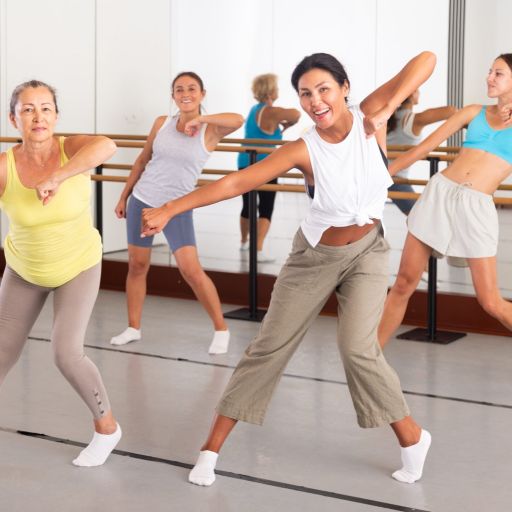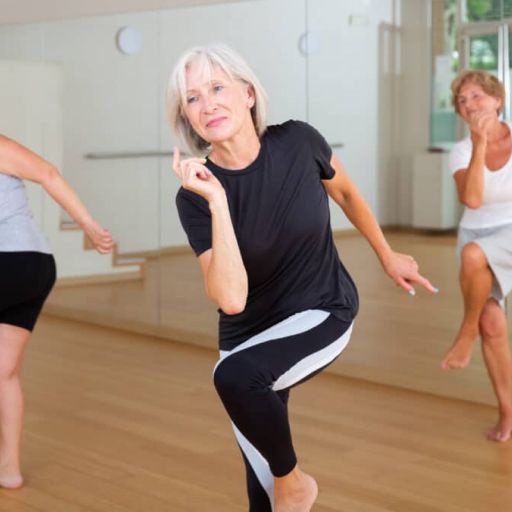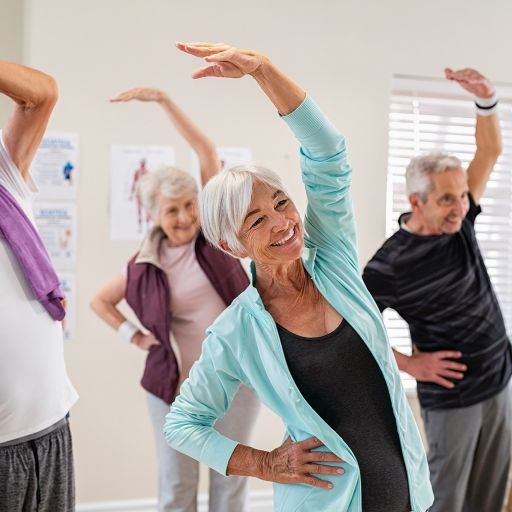Advertisement
In the cold winter, when most people choose to stay indoors, there is a group of energetic elderly people who dance aerobics in the winter, showing a different kind of vitality and style. Winter aerobics is becoming the secret of keeping the elderly healthy and energetic.
Benefits of winter aerobics
The temperature is low in winter, and the metabolism of the human body is relatively slow. Aerobics, as an aerobic exercise, can effectively improve the cardiopulmonary function of the elderly and enhance the body's endurance and resistance.
Through rhythmic movements and breathing coordination, blood circulation is promoted, so that the body can stay warm in the cold season.
It can also improve mental health. The gloomy weather in winter can easily make people feel depressed. Participating in aerobics activities can allow the elderly to go out of the house and interact with others, thereby improving their mood and improving their mental health.
In the aerobics team, the elderly dance together, share happiness, encourage each other, and form a positive social atmosphere.
Enriching life, for many elderly people, life after retirement may seem a bit monotonous. Winter aerobics provides them with a rich and colorful activity choice, making their lives more fulfilling and meaningful.
By participating in aerobics classes or community aerobics activities, the elderly can make new friends, expand their social circles, and increase the fun of life. Moreover, the elderly can show their style and vitality, and gain a sense of accomplishment and self-confidence by participating in aerobics competitions or performances.
These activities not only enrich their lives, but also make them feel their own value and meaning of existence.

Precautions for winter aerobics for the elderly
Before doing aerobics in winter, you must fully prepare for warm-up. Due to the low temperature in winter, the muscles and joints of the human body are relatively stiff. If you do strenuous exercise directly without warming up, it is easy to cause muscle strain and joint injury.
Warm-up exercises can include simple walking, joint activities, dynamic stretching, etc. For example, the elderly can first walk slowly indoors for a few minutes, move the ankles, knees, wrists and other joints, and then do some simple stretching movements, such as bending over to touch the ground, turning the waist, and stretching the arms.
These warm-up movements can effectively increase the body temperature, increase the flexibility of the joints, and prepare for aerobics exercises.
The temperature is low in winter, and the elderly must pay attention to keeping warm when doing aerobics. Wearing appropriate sportswear can not only ensure the body's free movement, but also keep warm.
It is recommended that the elderly choose sportswear with good breathability and strong warmth retention, such as sports cotton-padded clothes, sports pants, sports shoes, etc. At the same time, you can wear warm items such as hats, gloves, scarves, etc. to prevent the head, hands and neck from getting cold.
During exercise, if you feel your body is hot, you can reduce your clothes appropriately, but don't take off too much at once to avoid catching a cold.
The physical functions of the elderly are relatively weak, so they must control the intensity of exercise when doing aerobics. Don't pursue high-intensity exercise too much to avoid excessive fatigue and injury to the body.
When you start practicing aerobics, you can choose some low-intensity movements and combinations, and then increase the difficulty and intensity after gradually adapting. At the same time, pay attention to your body's reactions.
If you experience discomfort symptoms such as palpitations, shortness of breath, dizziness, etc., you should stop exercising immediately and seek help from a doctor.
Advertisement
The ground may be slippery in winter, and the elderly must pay attention to safety when doing aerobics. Choose a flat, dry venue for practice, and avoid exercising on slippery, uneven ground. In addition, when jumping, turning, and other movements, the elderly should pay attention to maintaining body balance to avoid falling.
If conditions permit, some protective facilities such as handrails and mats can be set up around the practice site to ensure safety.

Winter aerobics practice methods
The elderly can choose suitable aerobics courses according to their physical condition and hobbies. At present, there are many aerobics courses designed specifically for the elderly on the market.
These courses usually take into account the physical characteristics and needs of the elderly, and the movements are relatively simple, soothing, and moderate in intensity.
When choosing a course, you can consult a professional fitness coach or take some trial classes to understand the content and difficulty of the course and choose a course that suits you. At the same time, you can also choose some online aerobics courses to practice at home, which is convenient and safe.
It is very important for the elderly to develop a reasonable exercise plan. Generally speaking, the elderly can do 3-5 aerobics exercises per week, and each exercise lasts 30-60 minutes.
When formulating an exercise plan, you should take into account your physical condition and time arrangements, and reasonably arrange the intensity and frequency of the exercise. At the same time, we should pay attention to gradual progress and not to carry out high-intensity exercises at the beginning to avoid physical discomfort.
Mastering the correct movement skills is the key to aerobics practice. When practicing aerobics, the elderly should pay attention to the norms and standards of the movements to avoid physical injuries caused by improper movements.
You can learn the correct movement skills by watching teaching videos, attending training courses, etc. During the practice, you should pay attention to maintaining the balance and stability of the body, and the movements should be smooth and natural, not too stiff.
At the same time, pay attention to the coordination of breathing, and keep the breathing even and smooth.

The social value of winter aerobics
The participation of the elderly in winter aerobics activities can not only improve their health level, but also promote the harmonious development of the community.
In the community, the aerobics team can become a beautiful landscape, attracting more people to participate in fitness activities.
By organizing aerobics competitions, performances and other activities, the cohesion and centripetal force among community residents can be enhanced, and the harmony and stability of the community can be promoted.
At the same time, the active participation of the elderly can also set an example for young people, leading more people to pay attention to health and love sports.
Winter aerobics is the secret of the vitality of the elderly. It not only strengthens the body, cheers up the mood and enriches life, but also has unique advantages such as safety, reliability and promotion of social interaction.
When practicing winter aerobics, the elderly should pay attention to warm-up preparation, keep warm, control exercise intensity, pay attention to safety and other matters, master the correct practice methods, and combine with other sports to give full play to the social value of aerobics.
I believe that in the future, winter aerobics will receive more widespread attention and promotion, and become an important part of the healthy life of the elderly.
Advertisement





